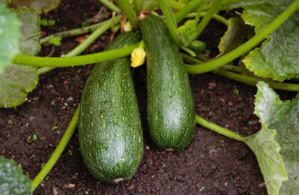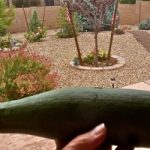Watters Garden Center
Where people who love to garden love to shop.
Tuesday, August 23, 2016
Sunday, February 2, 2014
Monday, September 16, 2013
Zucchini / Squash Contest Results
Congratulations to the winners of our Zucchini Squash photo contest!
http://wattersgardencenter.com/2013/zucchini-squash-contest-results/ Zucchini / Squash Contest Results
Sunday, September 15, 2013
Pansy Planting for winter
Saturday, September 14, 2013
Flame Maple
Flame Maple Amur Acer ginnala
Ideally sized accent tree for smaller homesites in beds and borders or as a foundation planting stand out. Use as seasonal front yard attention-getter or for a long range view out back. Can be utilized in groves for creative color compositions. Adapts well to wild gardens providing big maple looks in limited spaces. An excellent plant for a Japanese-style garden, mixed with airy, deciduous small trees and dense conifers

http://wattersgardencenter.com/2013/flame-maple/ Flame Maple
Friday, September 13, 2013
Quaking Aspen
30 second plant tip of the day: Quaking Aspen – Populus tremuloides
This is a superior tree for cold northern regions. It is most attractive in groves, and as components in windrows and shelterbelts. It will stand alone as a columnar tree in the suburban environment. Tall narrow form is ideal for filling gaps between tall buildings. Somewhat adapted for street and boulevard planting. A great foreground tree against dark background of evergreen conifers. Ease of cultivation is suited to naturalistic plantings in prairies or open space habitat.

http://wattersgardencenter.com/2013/quaking-aspen/ Quaking Aspen
In September Plants Communicate with their Gardeners
 The mountains of Arizona usually are “spotty” when it comes to rainfall. For example, when the weather service forecasts that “there is a 40% chance of rain”, 40% of our area will see rain. What is frustrating is that we never know which 40% of our gardens will revel in moisture, and which will be left dry! This year has been gratifyingly, damply different. With much of the season still ahead of us, over 15 inches of rain have been measured in my gardens. This monsoon season reminds me of the rains this area received back in the 1970′s. It really is nice to be experiencing a strong monsoon cycle.
The mountains of Arizona usually are “spotty” when it comes to rainfall. For example, when the weather service forecasts that “there is a 40% chance of rain”, 40% of our area will see rain. What is frustrating is that we never know which 40% of our gardens will revel in moisture, and which will be left dry! This year has been gratifyingly, damply different. With much of the season still ahead of us, over 15 inches of rain have been measured in my gardens. This monsoon season reminds me of the rains this area received back in the 1970′s. It really is nice to be experiencing a strong monsoon cycle.
Traditionally, by the end of September we slip out of the monsoonal pattern and back to our normal, “spotty” rain cycles. However, this year’s overabundant rains have made the next four weeks critical for gardeners. This is the season plants are most ‘talkative’, and you should get to know their “language”.
Although October through November is our normal period for plants to show their exhilarating colors, some plants declare themselves earlier. In doing so, they are “speaking” to alert us that they are struggling. They are somewhat like the gardeners who care for them. When we gardeners feel ill, we put ourselves to bed until we feel better, then indulge ourselves with appropriate sustenance until our aches and pains subside. Sick plants will put themselves “to bed” earlier in fall, much earlier than their other, healthy, partners in the yard.
When a plant shows its fall colors weeks before any other plant in the neighborhood it is screaming for help from its gardener. Although grubs and pocket gophers can be the culprits that induce root loss and plant stress, root loss usually is caused from having been planted into very heavy, rocky soils that can’t breath properly during monsoon rains. Plants in the yard can literally lose root mass because of very wet conditions. Plants that show abnormally early autumn colors are most likely the victims of these plant stresses. Seasoned gardeners know that the cure is administered in two easy steps.
Step one is “Soil Activator”, which encourages a plant to generate deeper roots as it repairs damage. This is the equivalent to chicken soup for you and me. This ‘chocolate for the soil’ fertilizer will regenerate dead soil around sick plants so they will want to send out new root hairs, those precursors to healthy roots. Even plants that are not sick will enjoy this soil nutrient by showing off deeper, more vibrant autumn colors towards the end of the year.
 Step two is just as simple: in one month follow up the soil activator with a natural plant food. Please stay away from synthetic foods for sick plants. They are much too strong for struggling plants and are dangerous to birds and pets. I developed a fertilizer called “All Purpose Plant Food” 7-4-4 that really helps both newly planted and sickly plants. Put plants to bed for the winter with this all natural food and you will have set the stage for some energetic spring growth next year.
Step two is just as simple: in one month follow up the soil activator with a natural plant food. Please stay away from synthetic foods for sick plants. They are much too strong for struggling plants and are dangerous to birds and pets. I developed a fertilizer called “All Purpose Plant Food” 7-4-4 that really helps both newly planted and sickly plants. Put plants to bed for the winter with this all natural food and you will have set the stage for some energetic spring growth next year.
Grubs and pocket gophers are more difficult to handle than too wet soil. Gophers are easy to spot by their exit tunnels of mounded dirt. These underground rats live to eat the roots off of our plants! For a personalized gopher solution contact me or revisit my February 22 column: “Keep Gophers from Devastating Landscapes”.
Grubs are white ‘C’-shaped insects that can attack and kill plants, trees, and shrubs by the dozens. Because they eat new root hairs as they grow from a plant, grubs literally starve their victims to death. Fortunately, the solution to eradication is very easy. Kill grubs by applying “Grub Killer” during the next monsoon rain. As the grub killer moves through the soil it eliminates grub activity and keeps this misery-inducing creature away for a year. In one month follow up with the “All Purpose Plant Food” to set the stage for healthy, vibrant spring growth.
If you are not sure why a plant is stressed enough to be showing its autumn colors early, apply both Soil Activator and “All Purpose Plant Food”. These two products will insure that better plant health will develop for the next spring season.
~~ ~~ ~~ ~~ ~~ ~~ ~~
 Plant of the Week – Dazzling Stacy mums are the best selling variety of mum. They deliver a super long bloom time and enjoy local garden hardiness. This garden mum glows yellow with a halo of fiery orange around each daisy-like flower. These big bold perennials are perfectly shaped and add color in autumn when few flowers are in peak bloom. Mums prefer an autumn planting into their gardens. They also love showing off in containers that share their ground space with Purple Prescott Pansies.
Plant of the Week – Dazzling Stacy mums are the best selling variety of mum. They deliver a super long bloom time and enjoy local garden hardiness. This garden mum glows yellow with a halo of fiery orange around each daisy-like flower. These big bold perennials are perfectly shaped and add color in autumn when few flowers are in peak bloom. Mums prefer an autumn planting into their gardens. They also love showing off in containers that share their ground space with Purple Prescott Pansies.
~~ ~~ ~~ ~~ ~~ ~~ ~~
 Photo Contest! Have you entered your garden prize into Watters’ FaceBook Photo Contest? Time is running out to get your photo and votes in by from you and your friends – contest ends Sunday, September 15th! There will be lots of winners who will receive a gift certificate from The Natural Healing Garden AND a Mum from Armstrong Growers
Photo Contest! Have you entered your garden prize into Watters’ FaceBook Photo Contest? Time is running out to get your photo and votes in by from you and your friends – contest ends Sunday, September 15th! There will be lots of winners who will receive a gift certificate from The Natural Healing Garden AND a Mum from Armstrong Growers ![]()
Until next week, I’ll see you at the garden center.
http://wattersgardencenter.com/2013/september-plants-communicate-gardeners/ In September Plants Communicate with their Gardeners




